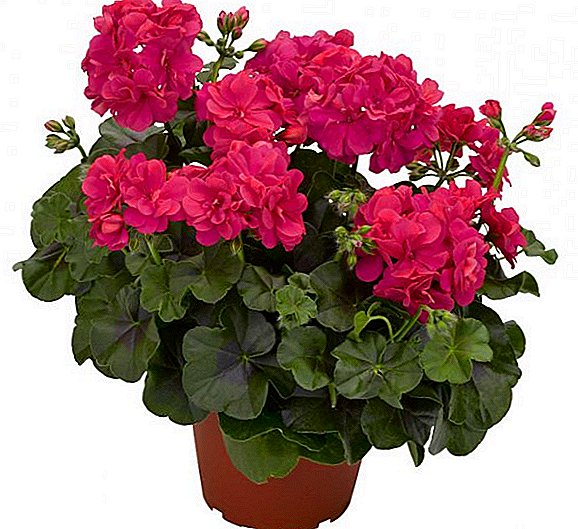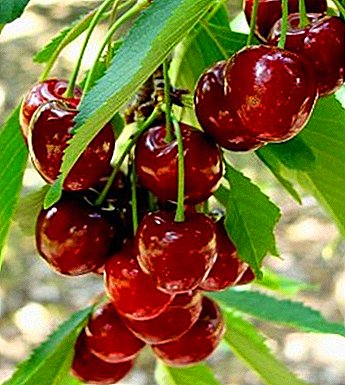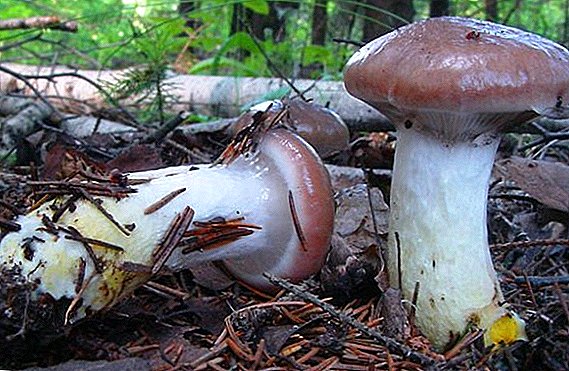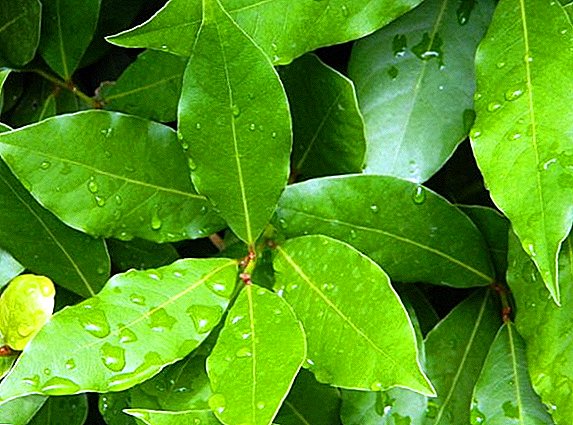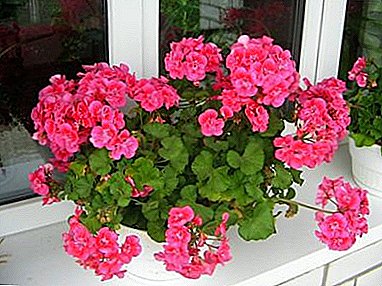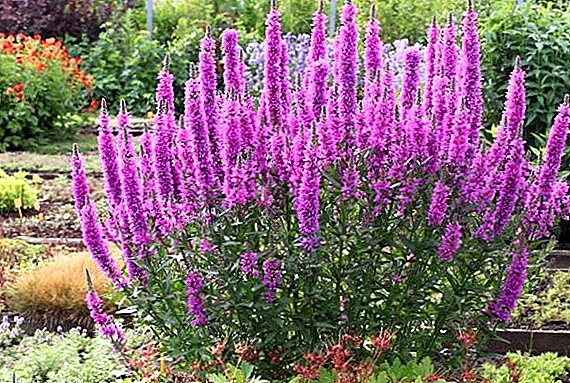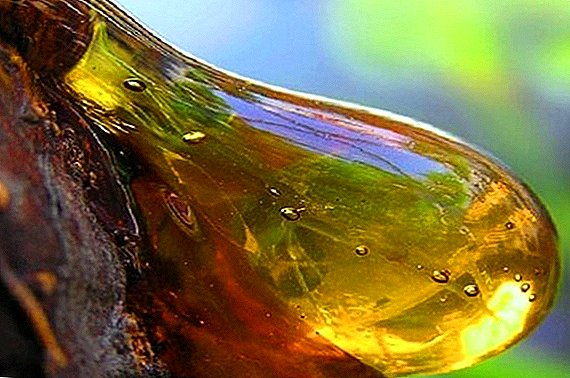 Pine resin is a product obtained from coniferous trees; in a simple way - resin. It is also called sulfur, and the hardened substance is called Barras. It is easily mined and widely used for medicinal purposes, both in official and traditional medicine. What good is this substance and how to apply it, we learn further.
Pine resin is a product obtained from coniferous trees; in a simple way - resin. It is also called sulfur, and the hardened substance is called Barras. It is easily mined and widely used for medicinal purposes, both in official and traditional medicine. What good is this substance and how to apply it, we learn further.
Chemical composition
A third of turpentine - resin acids. They are usually solid, but the fresh resin has a soft stretching structure. This is justified by the presence of terpenes, which make up almost 18% by weight.
Among the useful elements can be distinguished vitamins A, D, K, E, representatives of group B (P, PP). A lot of micro-and macronutrients in the resin is iron, cobalt, manganese, calcium, copper, phosphorus, zinc. There is also iodine and carotene.
Use: medicinal properties
Resin is used as an antiseptic and antibacterial agent. It has analgesic, anti-inflammatory effect. It is especially good to use it on festering wounds - the resin will disinfect the site of the lesion and will pull out all the bad, while healing will be faster.
Turpentine has a soothing property - baths with the addition of pine resin help to relax and soon fall asleep, heal insomnia. Frozen grains when ingested can relieve a cough. 
Important! Turpentine (resin derivative) is poisonous. Therefore, any treatment with his participation should be under the supervision of a physician.
Coniferous liquid can strengthen the immune system and return the body to strength after long and serious diseases.
Use in medicine: indications for use
Pine resin is used in the treatment of diseases of many organs and tissues.
Skin diseases
Indications for use:
- furunculosis;
For the prevention and treatment of furunculosis, they use hibiscus, ivy-shaped bud, stevia, soapstone, burdock leaves.
- eczema;
- allergic reactions;
- psoriasis;
- herpes;
- streptoderma;
- trophic ulcers.

Also in the form of ointments is recommended for the treatment of burns, cuts and other wounds. How it works:
- disinfects the skin;
- pulling pus (for example, with furunculosis);
- relieves pain;
- soothes;
- promotes rapid healing.
Diseases of the teeth and gums
Resin comes in many pastes and rinses that will help prevent gum disease and the formation of dental caries.
Indications for use:
- stomatitis;
- bleeding gums;
- ulcers on tongue and mouth;
- toothache;
- gingivitis;
- periodontal disease 1 and 2 degrees.

It is taken in the form of chewing mixtures in combination with medicinal herbs, as separate chewable flatbread (cherk), in the form of healing balms inside and locally.
How it works:
- kills germs;
- relieves inflammation;
- relieves pain;
- helps ulcers heal faster.
Joints and connective tissue
It is recommended for such illnesses:
- polyarthritis;
- arthritis;
- gout;
- radiculitis;
- osteochondrosis;
For the treatment of osteochondrosis also use ambrosia, sunberry, alokaziya, white acacia, larkspur, fir, burdock root, mordovnik, golden mustache and lilac.
- myositis;
- plexite;
- persistent backache from overwork and stress.

How does it work:
- when rubbed into the pain sites, the balm is able to stop the development of the disease and weaken the severity of its course;
- adding to the ointments baths and lotions allows you to relieve tension, relax muscles and joints;
- gum oil-based massages help warm the pain center and relieve pressure in the joints and muscles.
Respiratory diseases
Helps with:
- chronic diseases;
- pneumonia;
- bronchitis;
- pulmonary tuberculosis.
How it works:
- helps to dissolve sputum;
- promotes vasodilatation and expectoration;
- kills germs and bacteria;
- helps regenerate lung tissue.

Diseases of the digestive system
Indications for use:
- gastric or duodenal ulcer;
- colitis;
- enterocolitis;
- heartburn;
Reception of centaury ordinary, gentian, bay leaf, meadowsweet, chestnut honey and chestnut honey will also help you get rid of heartburn.
- gastritis;
- cholecystitis.
Assign drops in small doses, which are:
- remove pain;
- renew microflora;
- remove dysbiosis, as a result of the disease;
- help the healing of internal organs;
- improve the processes of the digestive tract.
Did you know? In ancient times it was believed that the resin of the ancient pine could attract wealth.

Diseases of the cardiovascular system
It will help to cure such diseases:
- angina pectoris;
- arrhythmia;
- tachycardia;
- vascular dystonia;
- endarteritis.
How does it work:
- when rubbed into the sternum and back gets inside and acts in places of the disease;
- soothes and removes pain;
- helps to normalize the processes in the heart and improve the condition of the blood vessels.
Diseases of the excretory system

Helps with:
- kidney stones;
- prostatitis;
- adenoma;
- hemorrhoids.
Familiarize yourself with the peculiarities of the treatment of hemorrhoids with the help of kupeny, laconosa, cornel, red mountain ash, black nightshade, swimsuit, portulaca, milkweed, momordiki, couch grass, euphorbia.
It uses enemas with a solution of resin, which are absorbed and begin to act locally. Baths based on therapeutic substances are also useful, as well as balm, which is taken orally.
Diseases of the reproductive organs
Turpentine treats:
- thrush;
- cervical erosion;
- cystitis;
- gonorrhea;
- also helps with PMS.
It is advised to apply microclysters or inject the solution with a tampon. Gum balsam is also prescribed. 
How does it work:
- eliminates pain and unpleasant discharge;
- facilitates the disease and contributes to its rapid treatment.
Eye diseases
Assign to treat:
- cataracts;
- wallet;
- barley
It works locally when instilling eyes with a solution of 5% turpentine balm.
Diseases of the central nervous system
Resumes processes in the central nervous system:
- with atherosclerosis;
- after injuries that led to a deterioration of memory, coordination, attention, speech;
- with senile dementia;
- with Alzheimer's disease.

Fights viral or microplasma infection; it is also prescribed for brain hypoxia. In general, sap stimulates and resumes all processes.
Endocrine diseases
Pine resin helps with inflammation of the thyroid gland. Thanks to succinic acids in the composition, the blood sugar level decreases and the condition of patients with diabetes improves.
Obesity, overweight
Excess weight can be removed by rubbing oil from turpentine in a steam room or bath - it activates the burning of fat. Slags and toxins are removed at the same time, and the person begins to feel much better. You can also use the bath. In the complex, these procedures will help to lose more than 5 kg per month.
Biting bloodsucking insects
Turpentine-based balms help prevent insect bites and remove the symptoms after them. They stop itching, burning and irritation. Used for tick bites:
- A few drops of balm drip at the site of tick infiltration - in a few minutes it will begin to creep out.
- In case of deep penetration, the balsam is left for 20 minutes, after which they begin to pull the body of the parasite with a loop.
After the bite you need a few days to drink a balm to prevent infection with encephalitis.
Application in cosmetology
To improve the condition of the skin of the face, neck and chest are advised to do massage with oil based on pine resin. It helps to smooth wrinkles, eliminate skin imperfections, makes the skin supple and fresh.
When caring for the skin in home cosmetology, they also use acacia honey, prickly pear oil, jujube, nettle, dandelion, gravel, fresh cucumbers, cumin, thyme and zucchini.
Resin is also used for massaging the back, legs and hands - it helps to relax muscles, warm up joints, expand blood vessels and remove pain, is also used for varicose legs. Helps to regenerate the skin, remove fatigue and increase efficiency.  Aromatherapy helps to remove runny nose and acute respiratory infections, relieve the lungs from sputum and improve breathing. A drop of oil can be added to the humidifier with the necessary function, or on the aroma lamp.
Aromatherapy helps to remove runny nose and acute respiratory infections, relieve the lungs from sputum and improve breathing. A drop of oil can be added to the humidifier with the necessary function, or on the aroma lamp.
Harm and side effects
Harm can be caused by the use of drugs in larger doses than prescribed by the doctor. As for side effects, with an overdose there may be rashes, nausea, diarrhea, vomiting.
Contraindications
An allergy to the therapeutic substance is possible, so before using it is better to check your reaction on the wrist by holding an ointment or balm there for 10 minutes. It is also best to refrain from using the product for pregnant women and children under 10 years of age.
Harvesting and storage of raw materials
We choose any pine tree we like in the forest and make an incision in the tree. To him immediately need to connect the container, which will merge the sap. One tree can produce up to 1.5 kg of resin. Most of the "harvest" will be collected from May to August. 
Important! You should not bring a tree to death - just make a couple of cuts to collect a liter capacity of the resin. The next two years, the tree can not be touched.
Collection Tips:
- if you wipe a knife or an awl with an oiled cloth, the resin will not stick to it;
- choose trees away from roads, construction sites and plants;
- sap can be cut from trees that have already been wounded by natural means;
- pitch accumulates under the bark where there are bumps.
If you want to keep the resin in liquid form longer, store it in a jar under a lid in a dark place. The resin has no shelf life, but it can harden and then it will be difficult to use.
Cooking recipe: how to take
Most often, the treatment uses resin in three variations - balsam (tincture), oil and ointment. Another option for the use of therapeutic substances - just suck and eat a piece of resin. 
Tincture
Equal portions of tar, olive oil and vodka are needed. Mix the ingredients and leave in a tightly closed container in a dark place for a week. After that, you can drink with radiculitis, back pain, with headaches, with diseases of the central nervous system, excretory system and with cardiovascular diseases.
Butter
Prepare the oil from the same portions of tar, sea buckthorn oil and lard. In the finished mixture, you can soak gauze or cotton pads and apply to the place of burns, wounds, scratches, cracks, ulcers. Every couple of hours the lotion changes.
Ointment
To prepare, we take a portion of turpentine, two servings of lard and a portion of beeswax. Mix all these substances to form a homogeneous mass. To use the ointment is ready immediately. Keep it better in the refrigerator in the bank.  It is suitable for skin diseases, back pain, for lotions on open wounds and ulcers. Apply until the skin heals and the pain disappears.
It is suitable for skin diseases, back pain, for lotions on open wounds and ulcers. Apply until the skin heals and the pain disappears.
Did you know? In ancient Egypt, pine gum was used as part of embalming liquids for mummifying the dead.
Another option for a more liquid cream - take a portion of pine resin and 10 servings of vegetable oil. The homogeneous mass of these ingredients boil for about 2 minutes. Used for varicose veins and applied to the problem area.
So, sap is a natural, affordable and useful substance. Make a resin from the resin and prepare a healing tool is not difficult if you follow the recipes. And you can just suck a piece of resin, which is also able to help with various ailments.


